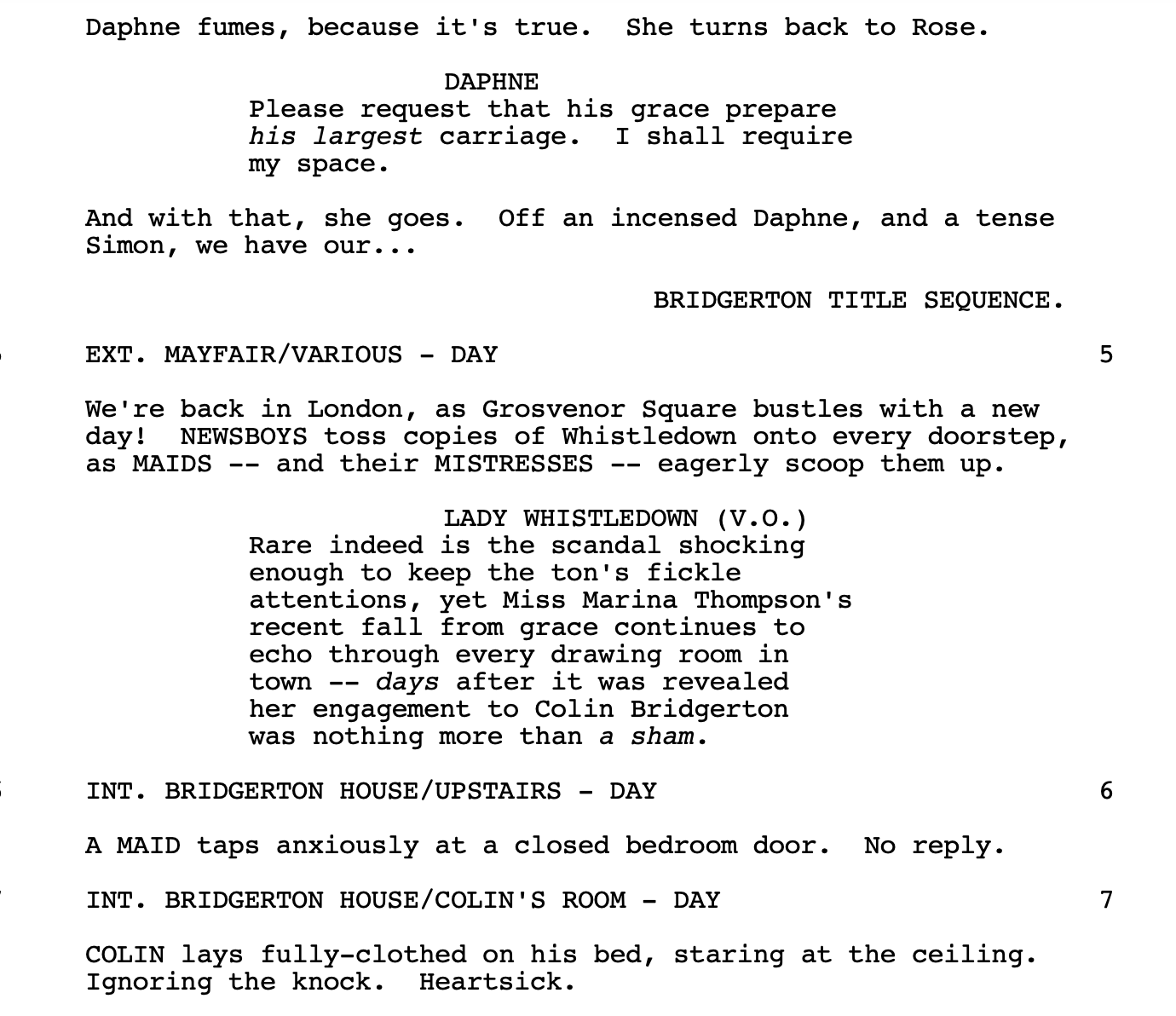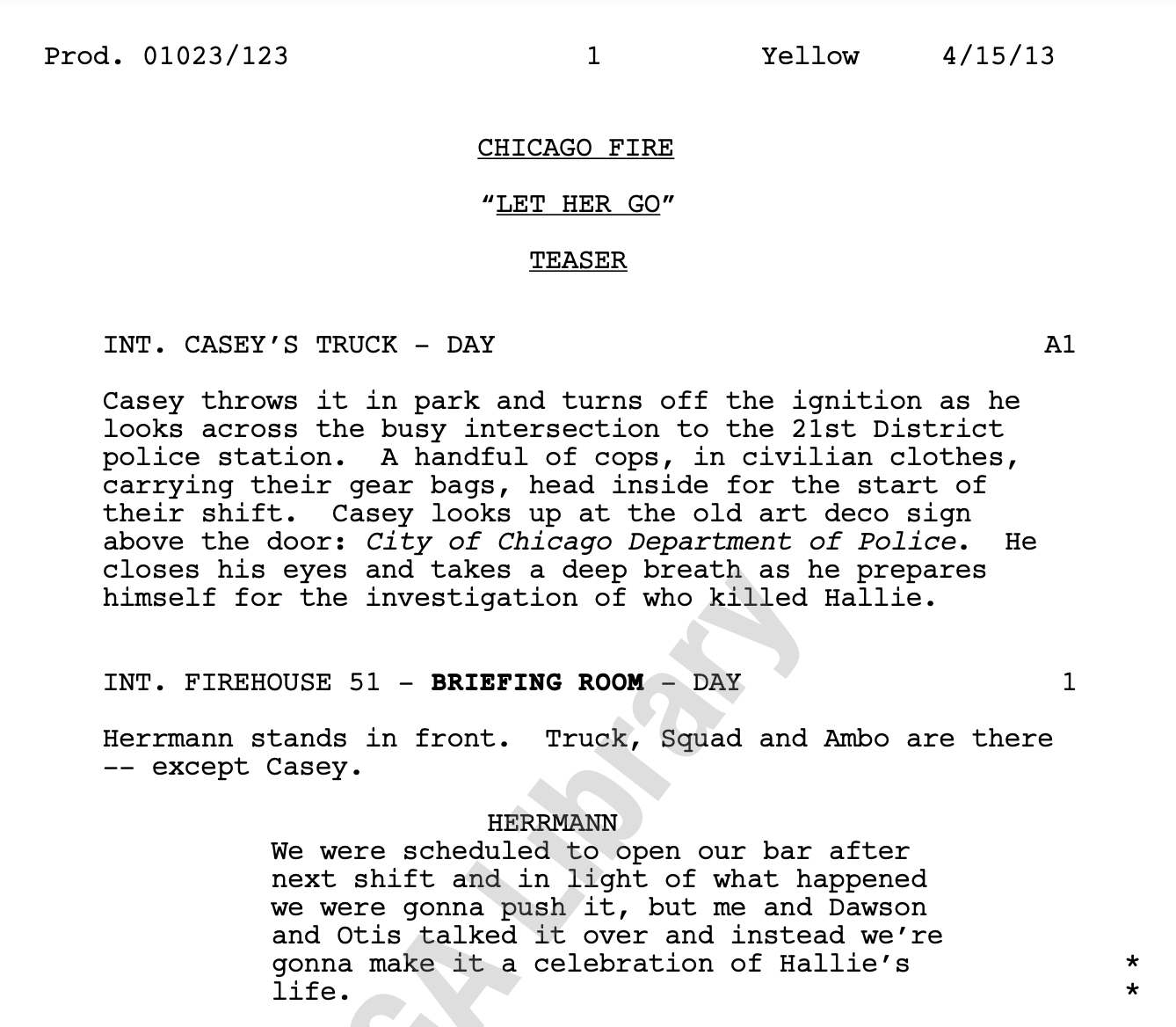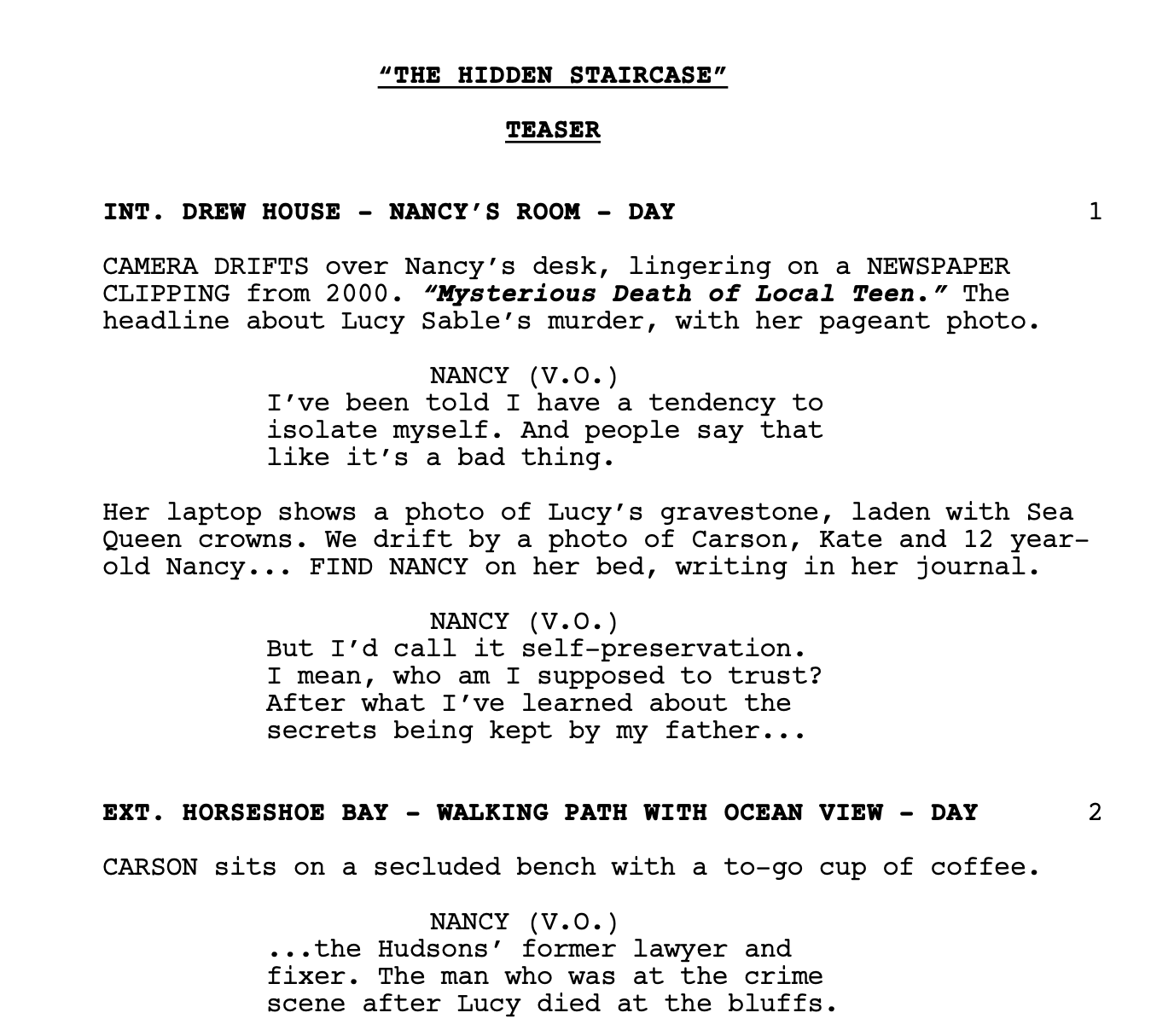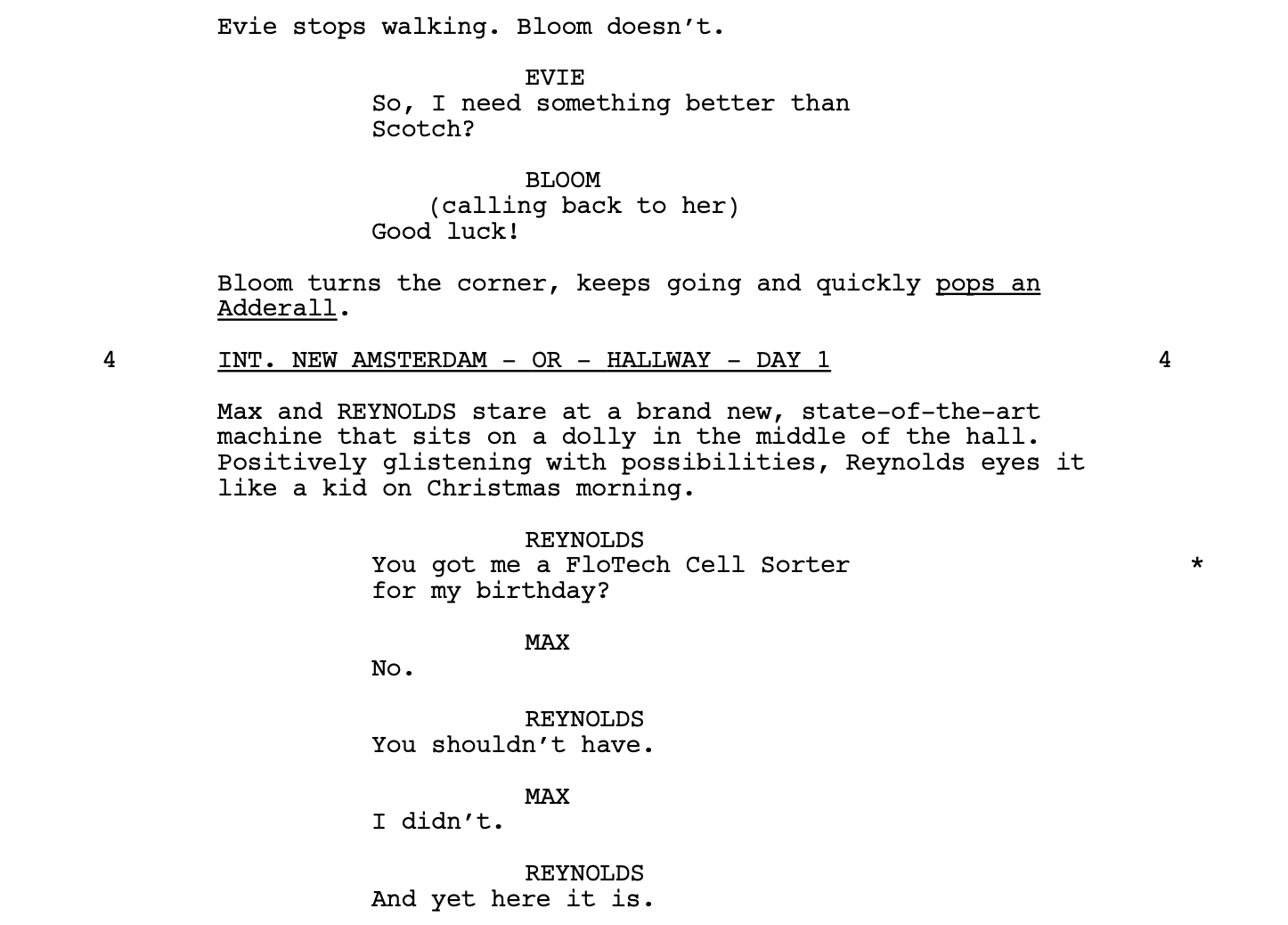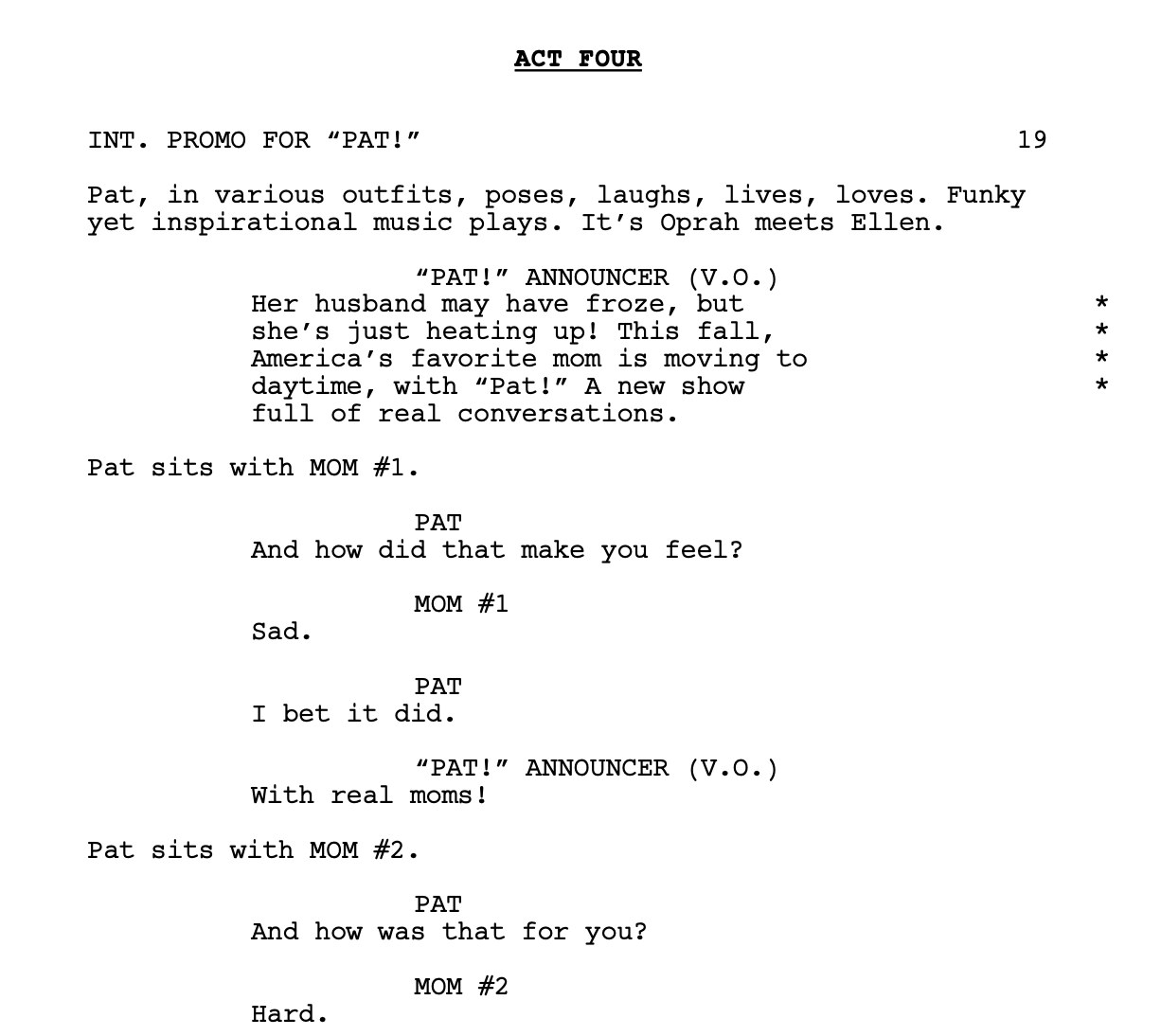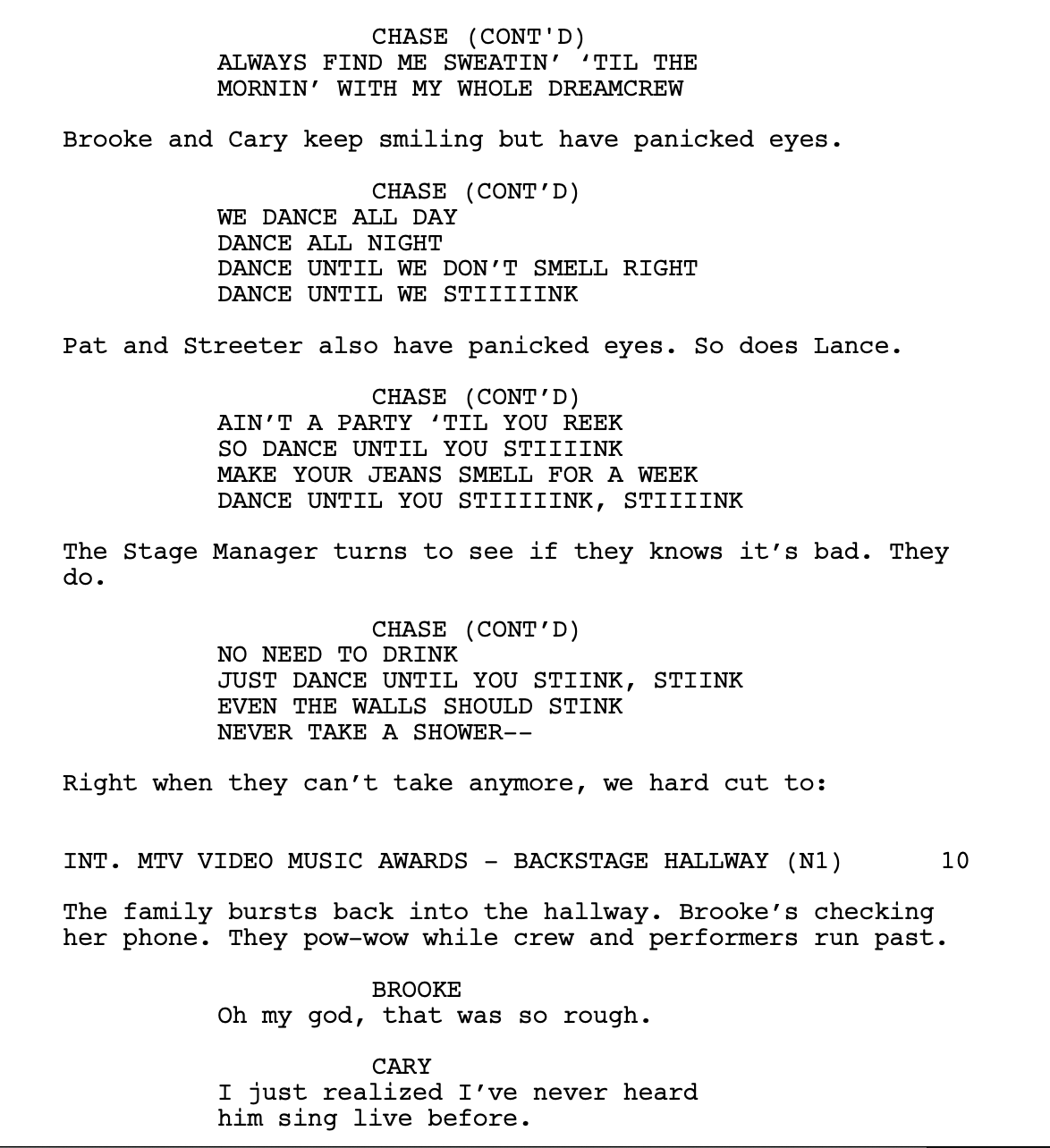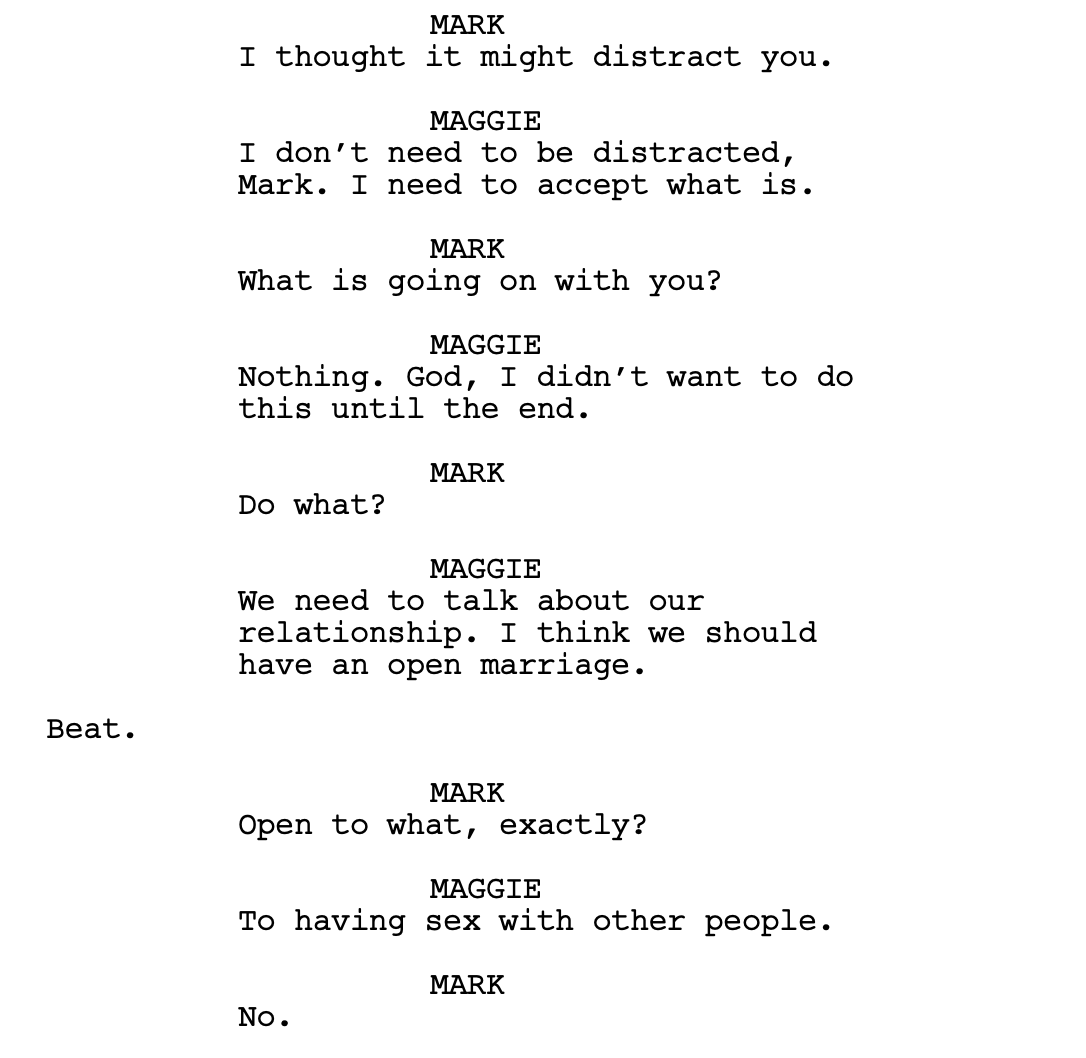FORMATTING YOUR SPEC SCRIPT WHILE SOCIAL DISTANCING: A PRIMER, PART 16
We’re back for another fun week of formatting pointers for anybody out there who might be working on a spec script! We hope these posts support you as you watch and break down the show you’re spec-ing. As always, we aren’t able to send out scripts in full as we are not the copyright holders, but we hope this primer jump-starts your research and writing. If you have further, more specific questions about the shows covered in this (or any other) formatting post, please e-mail us at library@wgfoundation.org and we can help clarify or provide more info.
BRIDGERTON (Netflix)
Average page count: 58-64
Average scene count: varies, but let’s say 45 to 60
Broken into acts? No
Other things to consider:
Scripts open without a FADE IN and without much fanfare.
The prose in Bridgerton scripts is like Dangerous Liaisons meets Scandal or Grey’s Anatomy. The paragraphs are long, emphasizing every sublime detail, but also possessing a certain commentary on the action — like the writer is watching the show with the reader — in a Scandal or Grey’s Anatomy kind of way.
While the paragraphs are long, the sentences are short, punchy and often incomplete, making for a very smooth read.
Certain actions and emotions are underlined or italicized for emphasis.
Most scripts call for the opening title sequence usually around page 3 to 5. This is formatted: BRIDGERTON TITLE SEQUENCE. In CAPITAL letters on the right-hand side.
Episodes end: END OF EPISODE, centered and underlined.
CHICAGO FIRE (NBC)
Average page count: 49-55… more around 52
Average scene count: 47-64
Broken into acts? Yes, 5 acts and a teaser
Other things to consider:
Scripts begin with CHICAGO FIRE centered and underlined, followed by the title of the episode in quotations, then the teaser. The teaser averages 5-7 pages, formatted: TEASER centered and underlined, then END OF TEASER.
After the teaser scripts are broken into five acts. On average, the first two acts are a bit longer (10-13 pages), then acts three, four and five tend to average 6-9 pages.
Act breaks are formatted ACT ONE / END OF ACT ONE, centered and underlined. At the end of the episode: THE END, centered and underlined.
In scene headings, the secondary location is often bolded… See the example below. If FIREHOUSE 51 is the establishing location, HALLWAY will be bolded.
This is a high-octane network show. The end of each act typically contains a cliffhanger of some kind.
NANCY DREW (The CW)
Average page count: around 47
Average scene count: varies 41-63
Broken into acts? Yes, 6
Other things to consider:
Scripts are broken into six acts. On average the first two acts are 10-11 pages. Acts three and four are 7-8 pages, then acts five and six are 5-6 pages as the episode picks up pace and wraps up.
The first act is a teaser. Scripts begin with TEASER, centered, bolded and underlined. More or less around page three, there is a main title cue, formatted: TITLE CARD (centered, bolded and underlined). At the end of this teaser/first act: END OF ACT ONE. Then, at the end of act six: END OF EPISODE.
The rest of the act breaks are formatted: ACT TWO / END OF ACT TWO, centered, bolded, underlined.
The script is full of memory pops and flashes of “Nancy vision.” A memory pop or Nancy Vision is formatted: MEMORY POP or POPS OF NANCY VISION or NANCY VISION in bold and italics, followed by a colon, followed by the description of the memory pop in italics. See example below.
Scripts use Nancy’s voice-over narration as a device.
As this is a network TV mystery, act breaks are often preceded by act outs or cliffhangers.
NEW AMSTERDAM (NBC)
Average page count: around 52
Average scene count: 37-55
Broken into acts? Yes, 5
Other things to consider:
The scripts are broken into five acts. No teaser. No main title cue. Just five acts. As a general rule of thumb, the first act is the longest at 9-16 pages. Acts two and three are around 9-11 pages. Then, acts four and five are shorter as the episode picks up pace and wraps up (5-8 pages or so).
Scene headings are underlined. Act headings are underlined and also in bold. ACT ONE / END OF ACT ONE. Then at the end of the episode, it's END OF EPISODE.
See in the below example how they sometimes underline notable actions or italicize significant bits of dialogue for emphasis.
The writers use act outs in the scripts, often ending acts with cliffhangers or "off of" a character's expression.
THE OTHER TWO (Comedy Central)
Average page count: 28-29
Average scene count: 20 to 40
Broken into acts? Yes, 4 and a cold open
Other things to consider:
Scripts are broken into a cold open and four acts. The cold open is 2-3 pages. Title sequence appears at the end of the cold open. This is formatted: “THE OTHER TWO” TITLE SEQUENCE, centered, bolded, underlined.
Acts one, two and three are mostly 6-9 pages. Act three is typically the a page or two shorter. Act four is formatted like an act, but it’s only 1-2 two pages long, which makes it feel like a tag.
Act headings are formatted: ACT ONE / END OF ACT ONE, centered, bolded, underlined. At the end of act four: END OF EPISODE.
Description is brief and punchy. Lots of white space on the page. The humor and jokes are found in the dialogue.
As a viral video star, sometimes Chase sings. Any singing is CAPITALIZED in the dialogue.
SPACE FORCE (Netflix)
Average page count: 33-35
Average scene count: 25-45 (there’s a big range)
Broken into acts? No
Other things to consider:
Scene headings are underlined.
As with a lot of other comedies, the dialogue is where the humor bubbles. Description is functional and simple.
While the scripts are not broken into acts, each script ends with END OF EPISODE or THE END centered and underlined. Sometimes bolded.
Until next time, happy writing!


